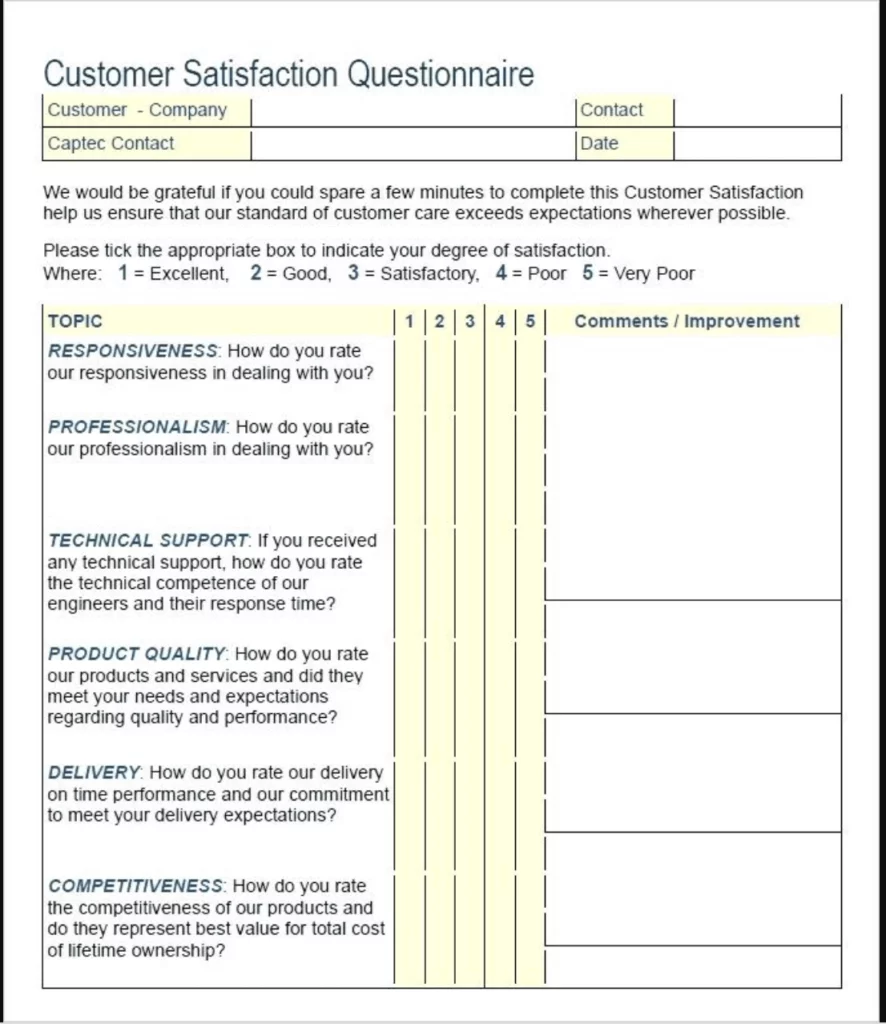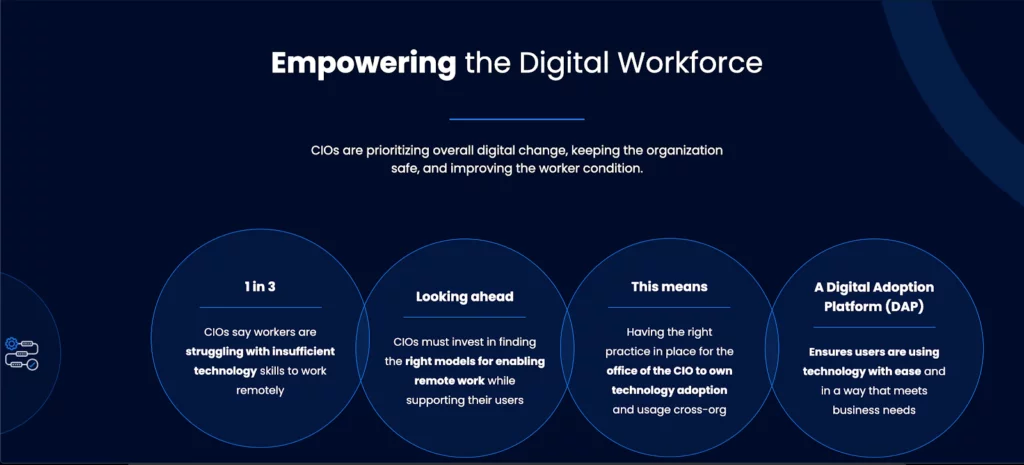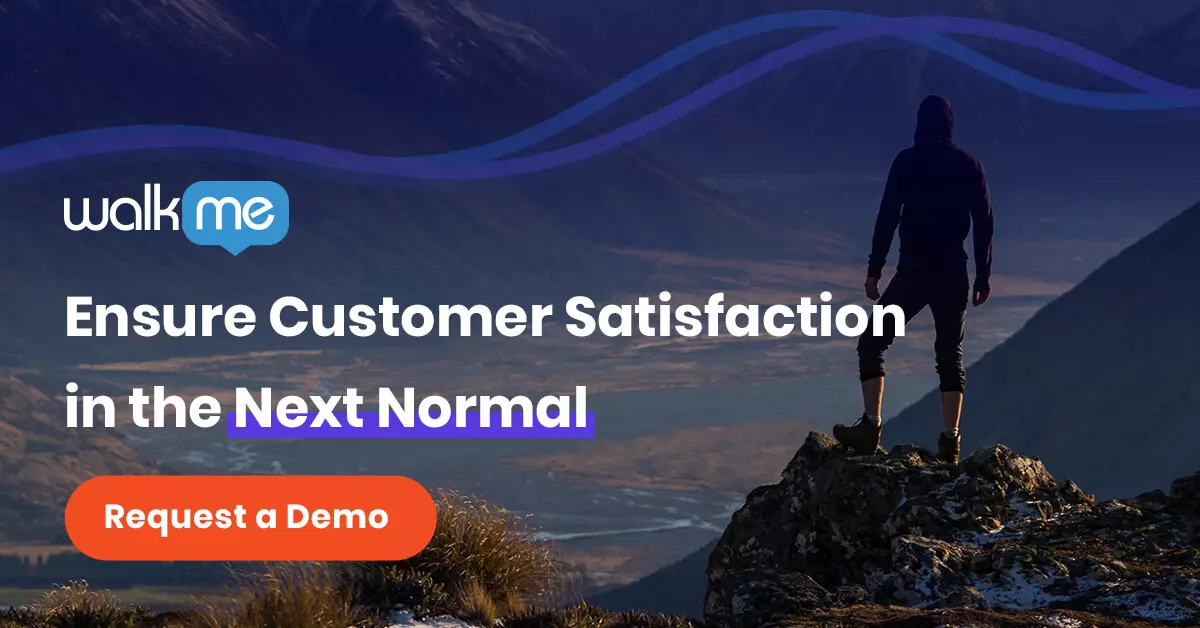What do you think results in the failure of 30% of all digital business initiatives?
Poor customer experience.
According to Gartner, if you fail to deliver top CX, your company’s survival is at risk. Demands for better personalization, fool-proof guidance, and sleek UI continue to rise. In the Next Normal, post-COVID, when nearly every product and service has a digital offering, customer experience is the ultimate brand differentiator.

To deliver a seamless customer experience, it’s crucial to measure and optimize customer experience metrics. Only then can you discover overlooked pain points — and better understand how to elevate the customer journey.
Here are the top five CX metrics to see how competitive you are in your market:
1. Intent
Visitor intent measures why users visit a website or page. This metric helps companies:
- Find out what users want when they first land on a specific site.
- Learn what problems visitors are trying to solve.
- Gain insight into audience needs.
- Create more relevant websites, products, and content.
There are two overarching types of visitor intent – informational intent and transactional intent. Either the website user visited your page to search for information or the user is in a mindset to buy something.
One way businesses measure intent is through website analytics. Successful business leaders utilize this data to learn: the terms that attract users to the site, which pages users visit, and how long users stay on web pages.
The best way to understand the psychology of visitor intent is to ask customers directly. Create pop-up questionnaires, online surveys, and customer polls. When you ask your website visitors a series of targeted questions — both open and multiple-choice — you can then answer the “why” behind what is motivating their actions.
2. Surveys
Customer satisfaction measures how satisfied customers are with a product, service, or experience with a company.
A recent survey reveals: 81% of marketing managers responsible for customer experience predict their companies will compete on the crux of customer experience by 2019.
However, barely 22% believe their customer experience efforts are exceeding customer expectations.
Especially in an age of digitization, where the economy is run by split-second consumer choice, customer satisfaction is essential to growing your business.

Credit: www.surveytemplates.org
To gauge customer satisfaction, you can provide surveys to consumers at various touchpoints throughout the journey. Ask customers to rate their experience on a scale of 1 to 10 — and learn what pain points might be red flags for your brand.
By asking your customers “How satisfied are you with this [experience, product, or service]?” you then have a starting point to boost loyalty.
Follow-up questions can dig deeper, asking for reasons behind the rating or ways to improve the experience.
3. Net Promoter Score (NPS)
A Net Promoter Score (NPS) gauges the customer’s overall satisfaction with and perception of a brand. This metric helps businesses assess the loyalty of their customer relationships.
To measure NPS, companies send out a survey to customers asking a single question: “How likely is it that you would recommend [brand] to a friend or colleague?”
Answers are measured on a scale of 0 to 10, and the higher the score, the stronger the customer loyalty.
Based on these answers, respondents are categorized as:
- Detractors – Those who score 0 to 6 are dissatisfied and can negatively impact brand perception through word-of-mouth.
- Passives – Respondents who answer 7-8 are satisfied, but not so loyal that they can’t be swayed by competitors.
- Promoters – Customers who answer 9-10 have had a positive experience, feel loyalty to your company, and will promote the brand, product, or service to others.
This metric has become a popular way to evaluate customer interactions, as business leaders discover insights into satisfaction, customer-driven advocacy, and brand perception.
4. Customer Effort Score
To measure a customer’s perceived level of ease when using a product or service, companies analyze the customer effort score (CES). This metric also is an indicator of how loyal customers are throughout the customer journey.
Customers don’t want to have to “work” when using your product or service. Consumers prioritize products or services that don’t demand too much effort.
A Digital Adoption Platform is often the missing piece to the CX puzzle. IBM’s CIO Nilanjan Adhya reflected on the difference it has made for them:
“With WalkMe, we have been able to get our customers to quickly accomplish what they need to do without having to learn the product or go through extensive documentation,” he says, “This has significantly accelerated time-to-value for our customers and improved outcomes overall.”

Effortless, positive customer experiences help your brand lift satisfaction levels. As a result, you’ll attract and retain high-value customers.
The best way to measure this score is by sending customers a survey asking:
- Overall, how easy (or difficult) was [product or service] to use?
- How likely are you to continue using [product or service]?
Ultimately, customers want to solve problems quickly, efficiently, and easily.
5. Customer Churn
Customer churn refers to the rate at which customers abandon a product, service, or brand.
To calculate it, divide the number of customers who cancel a service against those that you retain.
This quantitative metric can be segmented and measured in the following ways:
- Calculating overall customer churn during different time frames: monthly, quarterly, annually. Calculating customer churn based on specific customer cohorts at different time periods. For instance, a business can identify churn rates of a customer cohort that signed up for a specific promotion.
- Measuring churn during specific stages of the customer journey.
- Segmenting churn by customer type, and subscription plan.

Customer churn is one of the most essential customer experience metrics used to gauge the overall health of your customer relationships.
Building a strong brand identity is key in the Next Normal
Digital customer experience metrics offer you a close look into how your brand runs — from the consumer perspective.
Tracking this data allows you to analyze consumer behavior. When you puzzle out the behavior beyond the metrics, you can then personalize your product, service, experience, and brand.
After designing a data-optimized, customer-centric strategy, you’ll keep satisfied users coming back to your brand — and deliver a “perfect” customer experience. You may even disrupt a competitor’s business plans long-term.


